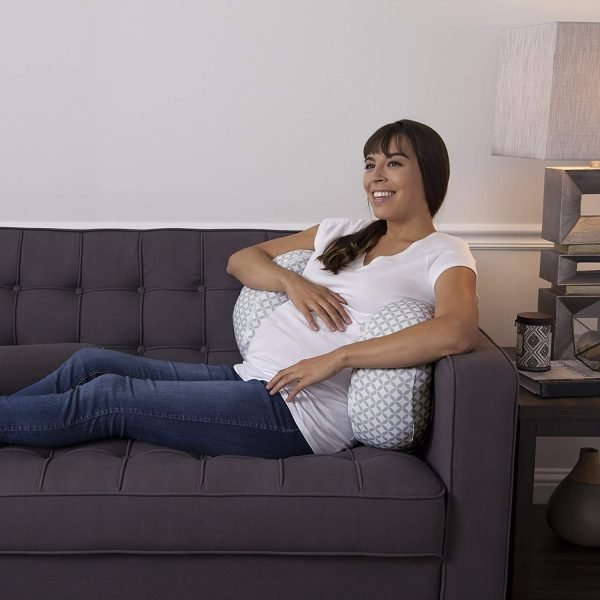
Welcoming a newborn into the world is a miraculous and transformative experience, but it can also be an overwhelming one. With a whirlwind of emotions and a steep learning curve, new parents face countless challenges and uncertainties. In such circumstances, acute knowledge of what to expect and how to deal with it can be handy.
So, to assist with the proper care of your newborn, we have listed practical advice and proven strategies. Let’s get started.
Understand Your Newborn’s Needs
One of the most crucial aspects of newborn care is understanding and responding to your baby’s needs. From their first cry to their subtlest gestures, babies communicate in various ways. Pay close attention to their cues, such as hunger, sleepiness, or discomfort, and respond accordingly. This attentiveness not only helps you meet their needs but also fosters a strong bond and attachment between you and your baby.
Creating a secure and loving environment is essential for your baby’s emotional development. Spend quality time together, engaging in skin-to-skin contact, cuddling, and soothing them with your voice. These moments of connection help build trust and lay the foundation for a healthy parent-child relationship.
Practice Proper Health Care
Regular pediatrician visits play a vital role in monitoring your baby’s growth and development. These appointments provide an opportunity to address any concerns, track milestones, and administer necessary vaccinations. Ensure you follow your pediatrician’s advice and be proactive in addressing any health concerns. Remember that some health complications, such as cerebral palsy, can have life-long effects on your child, so it’s crucial to take the necessary actions. If you suspect that your child may have cerebral palsy due to medical negligence or you need support and information on managing the condition, don’t hesitate to work with a legal team to get answers.
Additionally, keep an up-to-date record of your baby’s immunizations and medical history, and contact your healthcare provider if you notice any unusual symptoms or behaviors. Familiarize yourself with common conditions, and consult your pediatrician for advice on prevention, identification, and treatment.
Master the Art of Feeding
Feeding your newborn is a significant responsibility and plays a vital role in their growth and development. Whether you choose to breastfeed or formula-feed, it’s essential to establish a consistent feeding routine that meets your baby’s nutritional requirements. Keep in mind that every baby is different, so it may take some trial and error to find what works best for you and your little one.
Breastfeeding offers numerous benefits for both mother and baby, but it can also be challenging, especially in the beginning. Don’t hesitate to seek guidance from a lactation consultant or your pediatrician if you encounter any issues. If you opt for formula feeding, ensure that you’re using the correct type and amount, following the manufacturer’s guidelines. Regardless of your feeding choice, always be vigilant for signs of feeding issues, such as poor weight gain, excessive fussiness, or digestive problems, and consult your healthcare provider when necessary.
Ensure Safe Sleep Practices
Creating a safe sleep environment for your newborn is of utmost importance. To reduce the risk of Sudden Infant Death Syndrome (SIDS) and other sleep-related accidents, follow the “ABC” rule: babies should sleep Alone, on their Back, and in a Crib. Avoid using loose bedding, pillows, or stuffed animals, as these can pose suffocation hazards.
In addition to safety, establishing a consistent sleep routine will benefit both you and your baby. While newborns don’t have a regular sleep pattern yet, you can still begin to develop a bedtime ritual, such as a warm bath, gentle massage, or soft lullaby. This routine will help signal to your baby that it’s time to sleep and promote a sense of security and comfort.
Make Diapering a Breeze
Diapering is a crucial part of newborn care, and mastering this skill will make your parenting journey smoother. Start by selecting the right diaper size and type for your baby, considering factors like absorbency, fit, and personal preferences, such as eco-friendliness. Always keep a well-stocked supply of diapers and wipes on hand to ensure you’re prepared for any situation. When changing diapers, follow proper hygiene practices by cleaning your baby’s bottom thoroughly with gentle, fragrance-free wipes. Be sure to change diapers promptly when they’re soiled to prevent diaper rash and apply a barrier cream when necessary. If your baby does develop diaper rash, consult your pediatrician for advice on the best treatment options.
Keep Your Baby Clean and Comfortable
Bathing your newborn can be an enjoyable experience, but it’s essential to approach it with care. During the first few weeks, sponge baths are recommended until the umbilical cord stump falls off. After that, you can transition to tub baths, ensuring the water temperature is comfortably warm (about 100°F or 38°C) and using a gentle, tear-free baby wash.
When choosing baby care products, opt for hypoallergenic, fragrance-free options to avoid irritation. Be diligent in maintaining your baby’s hygiene, paying special attention to their face, hands, and diaper area. Remember to keep their nails trimmed to prevent accidental scratches and keep their ears clean using a soft cloth.
Safeguard Your Home
As your baby grows and becomes more curious about their surroundings, it’s vital to babyproof your home to ensure their safety. Begin by securing large furniture to the walls, covering electrical outlets, and installing safety gates at the top and bottom of staircases. Keep hazardous substances, such as cleaning products and medications, out of reach.
Select age-appropriate toys and gear for your baby, ensuring they’re free of small parts that could pose a choking hazard. Regularly inspect your baby’s belongings for wear and tear, repairing or discarding anything that may cause harm.
Encourage Development and Stimulation
Supporting your newborn’s development starts with understanding their milestones and providing appropriate stimulation. Engage your baby in age-appropriate play and activities, such as tummy time, grasping toys, or playing peekaboo. These activities help strengthen their muscles and develop motor skills, as well as cognitive and social abilities.
Expose your baby to a variety of sensory experiences, incorporating music, reading, and language into their daily routine. This exposure will help build their auditory and language skills and foster a love for learning from an early age.
Trust Your Instincts
As you navigate the world of newborn care, remember that there is no one-size-fits-all approach. Trust your instincts and listen to your baby’s unique needs, adapting your parenting style as necessary. It’s normal to feel overwhelmed at times, but with patience, practice, and perseverance, you’ll gain the confidence to make informed decisions that are best for your baby and your family.
Don’t hesitate to reach out to other parents, healthcare professionals, or online communities for support and advice. Sharing experiences and learning from others can be incredibly valuable as you embark on this incredible journey called parenthood.










